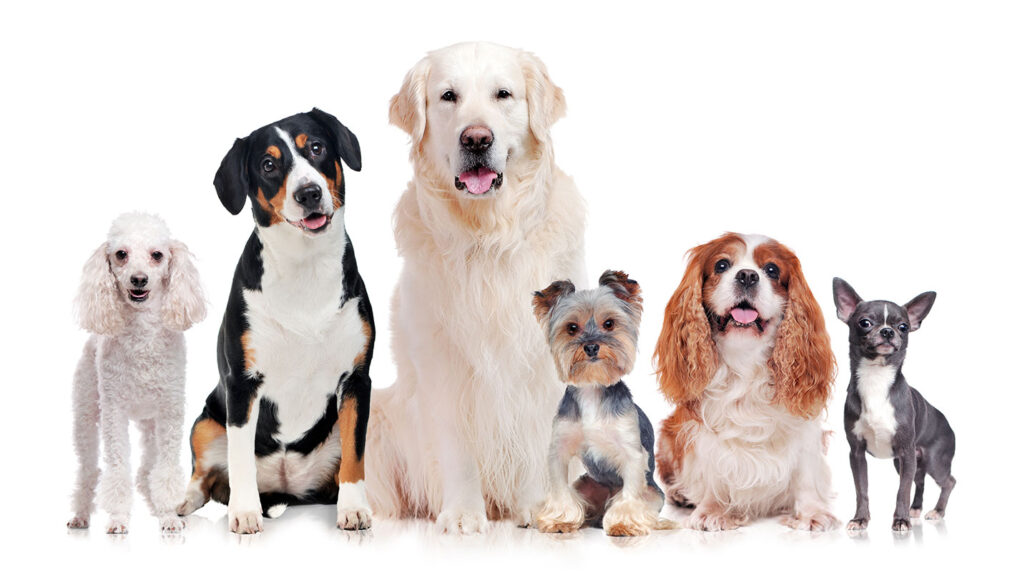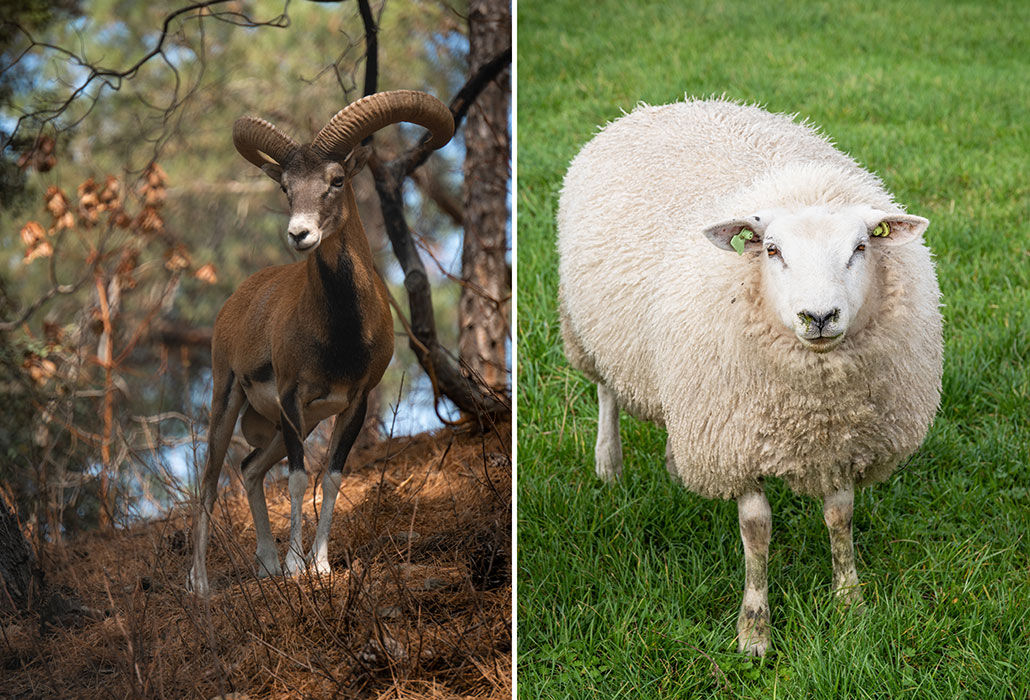Explainer: What is animal domestication?
Domestication changes both animals and people, bringing them closer together

Dogs are an example of an animal that has undergone the process of domestication. Their wild counterpart is the wolf.
Tatyana Kalmatsuy/iStock/Getty Images Plus
Put a miniature poodle next to a wolf. The little poodle has a short, wiry coat. It has tiny, delicate paws. It has a puffy tail that sticks straight out or curls up. It is probably happy to play fetch, get snuggles or be dressed up in cute outfits, and to look to people for all its needs. The large wolf, in contrast, looks like a wild animal. It has a scruffy coat and fur that blends into its background. This doglike creature hunts with its pack and doesn’t need or want anything to do with people.
These two animals aren’t so far apart biologically. They can even mate and produce puppies. But the biggest difference is that the ancestors of one of these animals — the poodle — became domesticated and developed a close relationship with humans.
Domestication is a process, says Sarah Crowley. She studies the relationship between humans and animals at the University of Exeter in England. And it’s a process that many familiar animals have undergone. These include dogs, of course, as well as cats, sheep, cattle, pigs and goats.
The process of domestication takes place over many animal and human generations. The animal may end up with changes in its genes, appearance and behavior. It’s “a relationship and process that affects us, too,” Crowley notes. As people live closer and closer to those animals, human behaviors can adapt and change.
This is different from simply taming an animal, notes Greger Larson. He’s an evolutionary biologist at Oxford University in England. Monkeys taken captive as babies or tigers doing tricks on TV are tamed. But they’re not domesticated. “A tamed animal is an animal that was an organism that was living in a wild context away from people,” he says. When it was young, someone captured it and got it used to people. It “is therefore less likely to eat you. It might still [eat you], but now it kind of knows you.”
Domestication, on the other hand, is “a long-term population shift,” Larson explains. Consider two groups of sheep. One lives wild, while another hangs around people. Over time, the sheep living near people start to relax. The animals might rely on the people for food. The people also change their behavior with the sheep. The humans might pen the sheep, shear them or breed them instead of letting the sheep romance each other. Hundreds or thousands of years later, the wild sheep and now-domesticated sheep are completely different in both appearance and behavior.

The question of domestication syndrome
Scientists have attempted to identify traits that all domesticated animals have. These would be traits that make domesticated animals different from wild ones. All together, these traits are often called domestication syndrome.
“Decreased fearfulness and aggression are behaviors that are generally assumed to follow domestication,” says Christina Hansen Wheat. “We expect domesticated animals to be more social and playful.” Hansen Wheat is a behavioral ecologist. She studies how animals interact with each other in an environment. She works at Stockholm University in Sweden.
With domestication syndrome, tame behaviors go along with physical changes, explains Hansen Wheat. Domesticated animals might have curly tails and floppy ears. They would be more likely to have white spots. They might also be able to breed when they are younger than their wild cousins. Some can breed all year round instead of having a breeding season. They might have smaller brains and bigger bodies.
At first glance, this seems to make sense. Domesticated dogs, pigs, sheep, horses and cows can all have floppy ears and often have white spots.
However, there’s a problem. Scientists have made many guesses about why domestication syndrome might occur. But none have been shown to be true. This could be because when scientists look closer, domestication syndrome itself falls apart, says Larson. No domesticated animal has every single trait in the syndrome, he notes. Instead, domestication syndrome might be people trying to see common traits in the animals they are close to.
“People live with their cats, live with their dogs, horses, cows and sheep and pigs. And so, everybody feels like they know what it is,” he says. “We are primed to see differences when those things matter to us.”
Domestication syndrome, Larson says, is also based on the idea that humans intended to domesticate an animal in the first place. “When we think about all the animals now that are very close to us, none of them were animals that any one person deliberately went out and said, ‘I’m going to make this a domestic animal,’” he notes. No one grabbed the first sheep and put it in a barn until it behaved.
Instead, animal domestication is a growing relationship. Humans and another species get closer and closer. Eventually, they couldn’t imagine a life apart. It’s a relationship that affects us just as much as it affects the animals, Crowley says. And the relationship is always changing. Some animals might get closer to us, while others get released to run wild again, such as pigeons.
In the end, Larson says, the math to make a domestic animal is simple: “an organism, plus people, plus time.”







